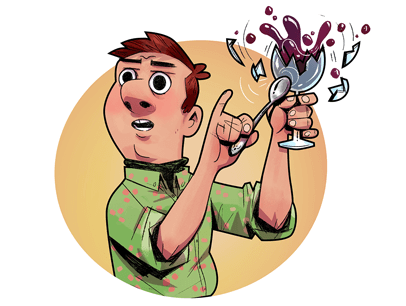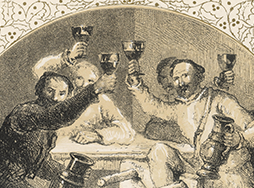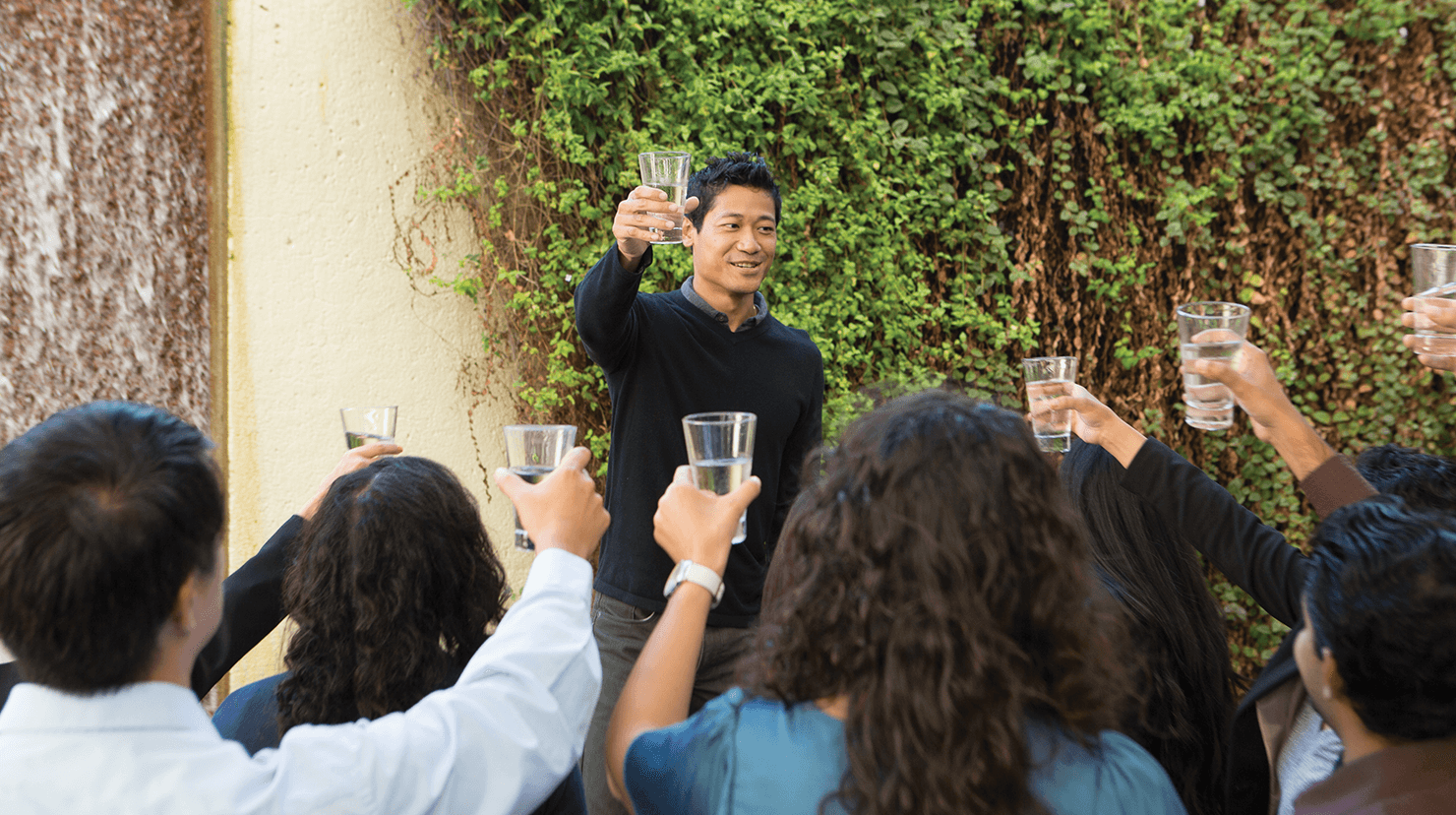
It’s the end of the year, which means you may have the opportunity to raise your glass and toast something or someone. And being a Toastmaster makes it even more likely you’ll be asked to give one, and perhaps that opportunity makes you cringe.
You might remember listening to someone deliver a toast that dragged on for 10 minutes, detailing a laundry list of past accomplishments (“Monique joined the company in 1988; by 1990, she was a team lead; in 1994, she …”), or someone who referred to inside jokes and inappropriate stories (“and how about that time the finance team ‘missed the bus to Pittsburgh’?!”). And then there are the cringe-worthy toasts given by someone who has spent too much time at the bar.
Don’t be that person. Whether given in person or virtually, toasts are a brief acknowledgement of goodwill and celebration.
Toasts are longer than a Table Topics® speech, but shorter than a club speech. Ideally they are memorable, meaningful, and personal. A tall order for a short speech. Here are some tips to break down the process.
Find the Purpose and Structure
First, look at the occasion and the reason for giving the toast. Is it an end-of-the year work party? Someone’s retirement? A holiday celebration? What or who is the center of attention? Focus on that.
“You need to understand who or what it is that you’re elevating and bringing to the center of attention,” says Meera Manek, a professional speechwriter, coach, and humorist, and a member of Warner Bros. Toastmasters in Burbank, California.
Consider your audience as well—your voice and content might be different depending on whether you’re speaking to the office about the past year, wishing someone well at their retirement, or simply raising a glass at the dinner table.
Toasts aren’t club speeches; rather, they’re meant to be short, inspiring celebrations.
Even a short toast should contain the hallmarks of a good speech: a purpose, some organization, and an introduction, body, and conclusion. You want to give a brief introduction of who you are and why you have been asked to give a toast. Then move into the celebratory part, with a brief anecdote or story summarizing the person or time. The conclusion can simply be, “and now let’s raise our glasses to [person or event]!”
Keep It Short
If you have a lot of time to prepare a toast, it’s tempting to gather as much information and as many stories as you can. And to a certain extent that’s a good idea, but only focus on a few anecdotes.
“Sometimes you could talk for an hour, but don’t,” advises Past International President Ted Corcoran, DTM, of Dublin, Ireland. “Dumping facts is sleep-inducing. You can’t tell a couple of hundred stories; you need to really narrow it down to a few important things.”
Somewhere between two and three minutes seems to be the sweet spot for holding people’s attention. Toasts aren’t meant to be long summaries, just thoughtful acknowledgements of a time, person, or occasion.
Toast, Don’t Roast
A toast isn’t the time to embarrass someone or dwell on a slump in business in the fourth quarter. You don’t want anyone—guests or the honoree—to feel uncomfortable or left out. Avoid inside jokes and profanity; a toast should be relevant, entertaining, and inclusive to everyone.
Think of a toast as the praise part of an evaluation. This isn’t the moment to focus on the areas of improvement or challenges to overcome. Instead, point out what went well. “You want to have a warm tone, and keep it light,” says Michael Varma, DTM, of Lake Forest, California, and the author of Tasteful Toasts. “People want to hear that things are looking better, getting brighter, or that a person is moving on to something better.”
That’s not to say you should overly embellish or make things up, just be mindful of what you choose to highlight.
“A good toast is a combination of sincere, thoughtful, meaningful,” says Manek. “It should leave you with a feeling that you experienced a tribute or a closure of some type. You understood how valued this person was, or how meaningful the event was.”
Add a Light Touch
Toasts aren’t club speeches; rather, they’re meant to be brief, inspiring celebrations. Think about your natural style. If you love telling stories, do that. Or use quotes, humor, or anything that personalizes and lightens the mood.
Corcoran is a lover of poetry, quotes, and witty quips. Varma enjoys using puns and funny sayings at the beginning or end of his toasts as a way of breaking the ice.
Manek finds that using positive humor at the beginning of a toast can be a good way to get your audience comfortable with you as a speaker. “A toast is about elevating a person or event and providing perspective. They trust that your perspective is the right one for the event.”
If you want to use humor, make sure you’re comfortable delivering it. Also make sure that the person you’re toasting is okay with some levity, and that it’s appropriate for the situation.
Write It Down
Some people are fooled by the length of time they have and think the words will appear as they start to talk. Especially for formal to semi-formal occasions, write out what you want to highlight so that you remember every point.
“I’m a big fan of writing it out ahead of time and memorizing it,” says Varma.
Because there are generally a lot of emotions surrounding a toast, Manek also recommends jotting down some notes to bring with you. And you may still be composing it until the last second, she notes. “You’re hearing new things throughout the event that you’ll want to include.”
If you do use notes, use notecards, not a big sheet of paper, and don’t read notes off your phone. “It makes you look like you’re Googling ‘how to toast,’” says Manek.
Don’t overthink the toast, but don’t underthink it either. Be kind, be specific, be brief.
And if you want to get some practice toasting, consider leading a toast at your next club meeting.
Related Articles

Funny You Should Say That
Here's to ...

Presentation Skills
A Historical Odyssey: Toasting Traditions Over Time

Presentation Skills
Master the Toast

Speaking Outside The Club



 Previous
Previous

 Tips for Toasting
Tips for Toasting
 Previous Article
Previous Article